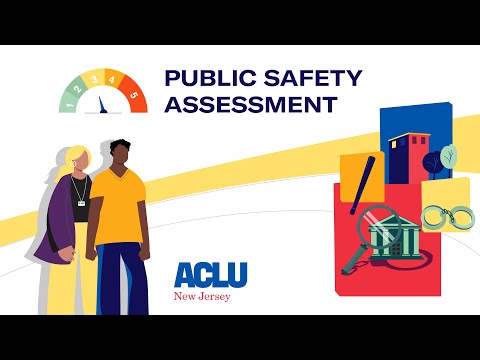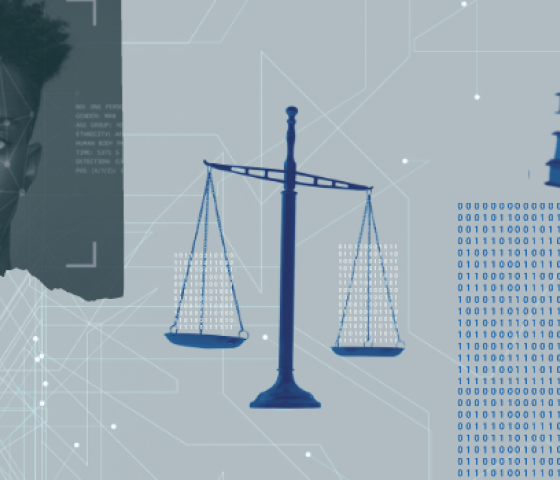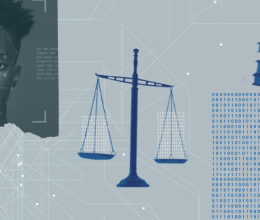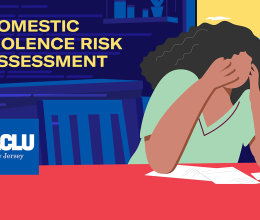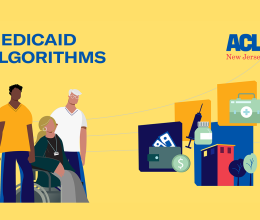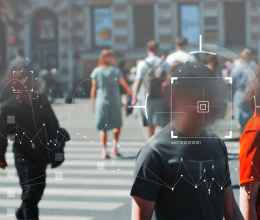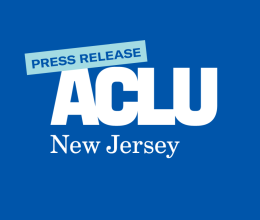When someone is charged with a crime and arrested, a judge must decide whether to detain them pending trial. If they are forced to remain in jail, it will be increasingly difficult to avoid taking a plea deal – and facing the subsequent consequences – even if the charges against them are wrongful. People who are jailed before trial also receive far-harsher prison sentences if convicted. If allowed to fight their charges from home, they will likely get a much fairer outcome. This makes the decision determining pretrial freedom one of the most consequential in someone’s entire case – and in New Jersey, the criminal legal system relies on algorithms to make that decision.
About the Public Safety Assessment
In 2017, after abolishing cash bail, New Jersey adopted a pretrial risk assessment algorithm called the Public Safety Assessment, or PSA to inform whether to detain someone pending trial.
"People who are jailed before trial also receive far-harsher prison sentences if convicted. If allowed to fight their charges from home, they will likely get a much fairer outcome."
The PSA measures two aspects of a defendant’s “risk” level on a scale of one to six – how likely they are to fail to appear at future court dates and to what extent they might pose a risk of being rearrested – which informs the judge in their decision whether the defendant should be released. The PSA also provides a “flag” if it calculates an elevated risk that the person might be rearrested for a crime of violence. New Jersey’s current system presumes that people have a right to remain free while they fight their charges and can only be detained if a judge – informed by the PSA – deems that they cannot be released safely.
The Questions Raised by Pretrial Risk Assessment Algorithms
These kinds of pretrial risk assessment algorithms have come under heavy scrutiny in recent years, and for good reason, because they can perpetuate racial bias in how they evaluate risk. People of color, who are more likely to be arrested than white people and sentenced more harshly for the same kinds of crimes, will likely experience higher risk scores – a result of decades of systemic racism and targeted over-policing of Black and brown communities, context that the assessment itself ignores.
This speaks directly to some of the Automated Injustice Project’s most pressing questions: can an algorithm that looks at just nine factors about a defendant honor the due process owed to every person under the constitution? And further, should someone’s life be reduced to a number on a page – a non-comprehensive assessment of reality – when their liberty is on the line?
Our interpretation of these essential questions is informed by what we’ve seen in New Jersey, which first implemented the PSA in 2017 as part of its effort to eliminate cash bail in nearly all criminal cases. What has been the impact of this massive shift away from cash bail? And how has the PSA affected that landscape?
New Jersey’s Experience with Pretrial Risk Assessment
Since the removal of cash bail and the adoption of the PSA in 2017, New Jersey has drastically reduced its jail population at no cost to public safety. Defendants have continued to appear in court at similar rates with no increase in crime, and now they spend less time in jail. This points to a major success of New Jersey’s abolition of cash bail – incarcerating people before they have been convicted is cruel and unnecessary.
"Proponents of the pretrial risk assessment algorithm had hoped it would make decisions free from bias, unlike human judges, but that just isn’t true."
But the PSA has not addressed the systemic racial bias of who is being detained pending trial. Before bail reform and the adoption of the PSA, Black defendants represented 54% of New Jersey’s jail population. Now, five years later, that figure remains unchanged despite the overall jail population being drastically reduced. Proponents of the pretrial risk assessment algorithm had hoped it would make decisions free from bias, unlike human judges, but that just isn’t true.
New Jersey’s experience using the PSA underlines the imperative for comprehensive regulation and oversight of government algorithms and automated decision systems. The government should have the obligation to constantly assess the algorithms it relies on to better understand their impact on marginalized communities – and these systems shouldn’t be shielded from public scrutiny and accountability. Some studies have already analyzed the performance of the PSA but understanding its impact, and the effect of systems like it, is a crucial undertaking that needs support.
Only when accompanied by a robust infrastructure of oversight regulating their use should we even begin to consider incorporating algorithms into decisions that affect things as important and life-altering as a person’s civil rights and civil liberties.
We have the right to know that the government is treating us fairly and with dignity. New technologies like algorithms and automated decision systems are no exception.
